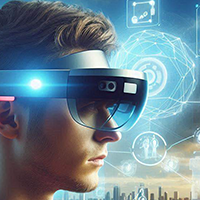As We May Interact: Challenges and Opportunities for Next-Generation Human-Information Interaction

Long before the advent of personal computing, Vannevar Bush envisioned the Memex as a solution to address information overload by enhancing the management and refinding of information through associative trails. While other hypertext pioneers like Douglas Engelbart and Ted Nelson introduced advanced hypertext concepts to create more flexible document structures and augment the human intellect, some of their original ideas are still absent in our daily interaction with documents and information systems. Today, many digital document formats mimic paper documents without fully leveraging the opportunities offered by digital media and documents are often organised in hierarchical file structures. In this keynote, we explore how cross-media technologies, such as the resource-selector-link (RSL) hypermedia metamodel, can be used to organise and interact with information across digital and physical spaces. While emerging wearable mixed reality (MR) headsets offer new possibilities to augment the human intellect, we discuss how hypermedia research, in combination with other technologies, could play a major role in providing the necessary linked data and hypertext infrastructure for this augmentation process. We outline the challenges and opportunities for next-generation multimodal human-information interaction enabled by flexible cross-media information spaces and document structures in combination with upcoming mixed and virtual reality solutions.
Publication Reference
Signer, B.: "As We May Interact: Challenges and Opportunities for Next-Generation Human-Information Interaction", Proceedings of HUMAN 2024, 7th Workshop on Human Factors in Hypertext, Poznan, Poland, September 2024
WISE Authors
Related Research Topic(s)
Related Research Project(s)
- Real-Time Cross-Media Data Exploration and Analysis for Next-Generation Knowledge Workers
- iServer - Cross-Media Link Server
- Cross-Media Information Management for Next Generation Scholarly Workflows
- Next Generation User Interfaces for Human-Information Interaction



